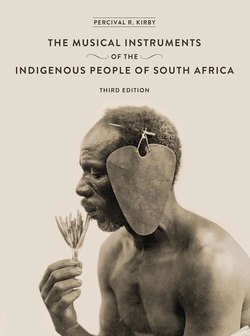Читать книгу Musical Instruments of the Indigenous People of South Africa - Percival Kirby - Страница 17
На сайте Литреса книга снята с продажи.
Оглавление— CHAPTER THREE —
XYLOPHONES AND ‘SANSAS’
THE most elaborate musical instrument found in South Africa is the resonated xylophone, commonly called marimba. Two varieties are met with, the first among the Venda and the second among the Tshopi. Both are called by the same name, mbila, and both are constructed on the same principle; but the two types are made from different materials, and the two races have each their own manner of performance.
The earliest reference to the instrument that I have been able to discover occurs in Fr. João dos Santos’ description of his visit to eastern Ethiopia in 1586.1 The people he described were Karanga. The present-day successors of this race do not appear to use the instrument to any great extent, but their South African neighbours, the Venda, certainly do; and it seems to be their form of the instrument, rather than that of the Tshopi, that dos Santos describes with the greatest accuracy and detail in Book I, Chapter 10 of his account.
Quiteve (the chief) makes use of another class of Kaffirs, great musicians and dancers, who have no other office than to sit in the last room of the king’s palace, at the outer door, and round his dwelling, playing many different musical instruments, and singing to them a great variety of songs and discourses in praise of the King, in very high and sonorous voices. The best and most musical of their instruments is called the ambira, which greatly resembles our organs; it is composed of long gourds, some very wide and some very narrow, held close together and arranged in order. The narrowest, which form the treble, are placed on the left, contrary to that of our organs, and after the treble come the other gourds with their different sounds of contralto, tenor, and bass, being eighteen gourds in all. Each gourd has a small opening at the side near the end, and at the bottom a small hole the size of a dollar, covered with a certain kind of spider’s web, very fine, closely woven, and strong, which does not break. Upon all the mouths of these gourds, which are of the same size and placed in a row, keys of thin wood are suspended by cords so that each key is held in the air above the hollow of its gourd, not reaching the edges of the mouth. The instrument being thus constructed, the Kaffirs play upon the keys with sticks after the fashion of drum-sticks, at the points of which are buttons made of sinews rolled into a light ball of the size of a nut, so that striking the notes with these two sticks, the blows resound in the mouths of the gourds, producing a sweet and rhythmical harmony, which can be heard as far as the sound of a good harpsichord. There are many of these instruments, and many musicians who play upon them very well.
This is an extraordinarily interesting description. Its date clearly shows that the instrument was developed entirely without European influence. It will be noted that performers upon it were specialists, and that its name ambira is the same as mbila, by which it is known to-day. Further, that the beaters had heads made of balls of sinew, not of rubber, which is invariably used at the present time. This remark about the beaters explains why one pair in my possession has heads of thin rubber threads wound into balls upon the sticks. The rubber has been taken direct from the tree and wound thus after the manner of the sinew of old. This pair of sticks will be seen in Figure 3.11. João dos Santos’ statement that the slabs of wood of higher pitch are placed to the left of the instrument does not hold nowadays; but his account is so wonderfully accurate that one hesitates in suggesting that he was mistaken in this solitary particular.
The instrument described by dos Santos was, however, seen by him in the hands of a people living north of the River Limpopo; but there exist two eighteenth-century accounts of the mbila as seen at the Cape, which show that the instrument had been ‘imported’ into the Union even in those days. The first of these descriptions was written by La Caille,2 who, under the date 1st January 1753, wrote:
I have seen an instrument played which is used by the Caffres. It is composed of twelve rectangular boards, each eighteen to twenty inches long, whose breadth goes on diminishing from the first, which is about six inches, to the last, which is hardly two and a half. These boards are assembled side by side on two triangles of wood, to which they are attached by means of leather thongs, so that the whole instrument forms a kind of table four feet long and twenty inches broad: under each board there is a piece of calabash which is attached to it [sic] to increase the resonance. A man carries this instrument in front of him, almost in the same way that our women in Paris carry an inventaire (a flat basket suspended before the wearer). He plays by striking thereon with two mallets of wood, of which the shape and size approximate to those of a plumber’s soldering-iron. This instrument is tolerably sonorous, and with its twelve notes a great many tunes can be played upon it.
